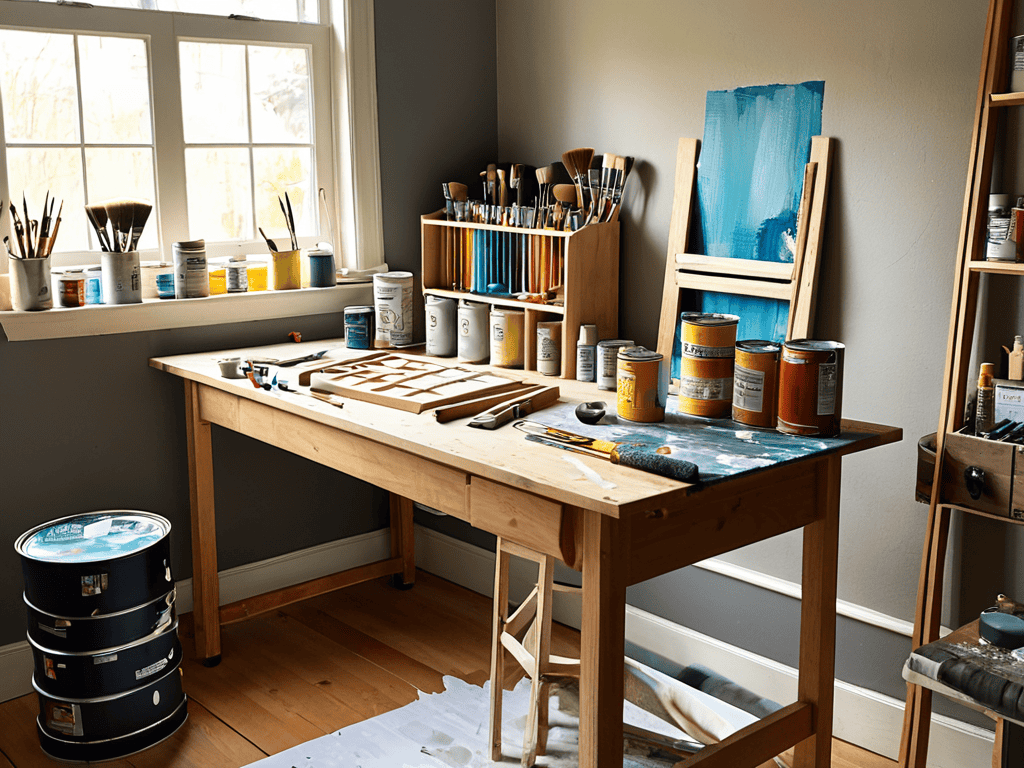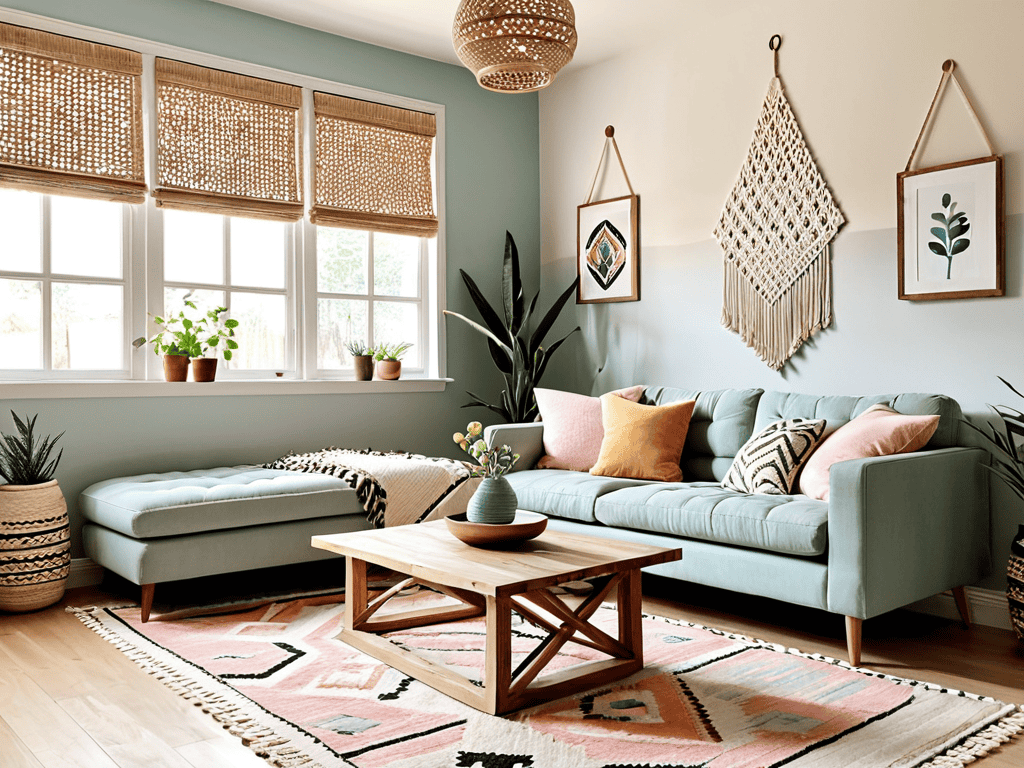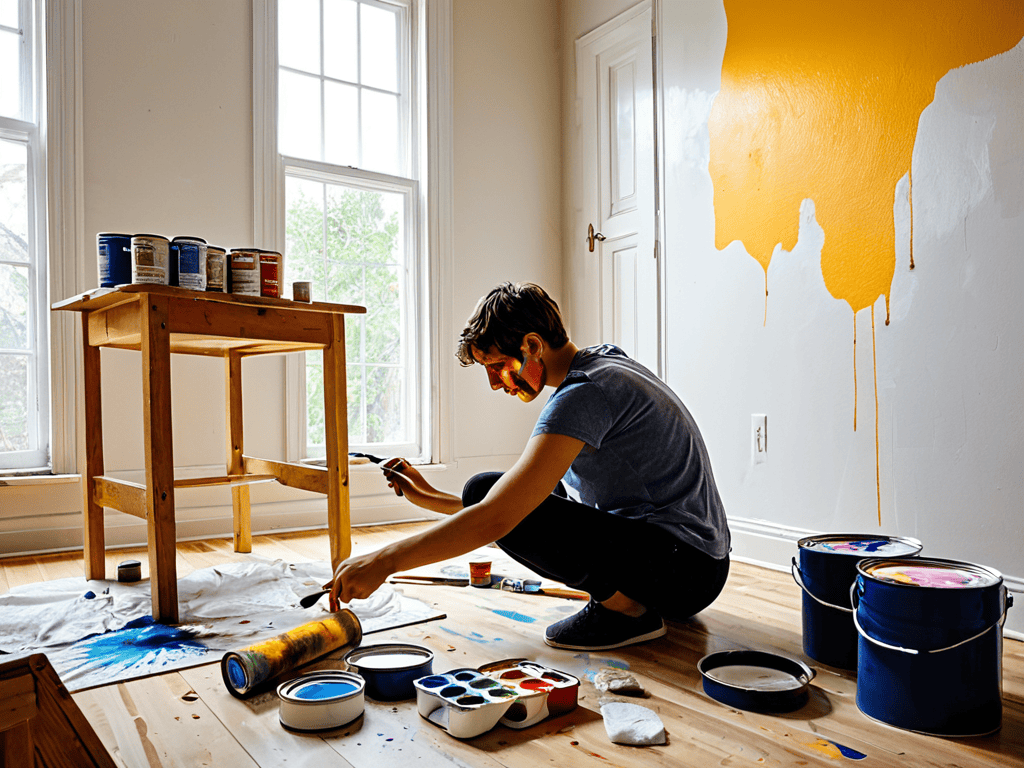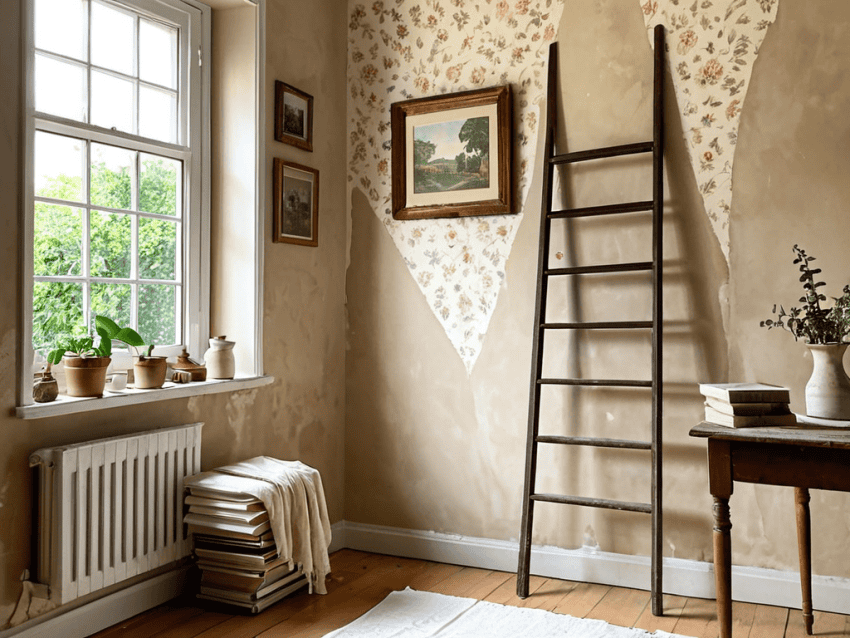I still remember the first time I decided to take on a DIY painting and decor improvements project in my own home. I was intimidated by the thought of making mistakes, but the thrill of transforming my space kept me going. The myth that you need to be a professional to achieve stunning results is simply not true. With the right guidance and a bit of patience, anyone can give their home a fresh new look. I’ve learned that it’s all about embracing the process and having fun with it.
In this article, I’ll share my personal experience and practical tips on how to make DIY painting and decor improvements a success. You’ll learn how to choose the right colors, prepare your space, and execute your vision without breaking the bank. I’ll cut through the noise and give you honest advice on what works and what doesn’t. By the end of this guide, you’ll be equipped with the confidence and knowledge to tackle your own DIY projects and transform your home into a beautiful, functional space that reflects your personality.
Table of Contents
Guide Overview: What You'll Need

Total Time: 2 hours 30 minutes
Estimated Cost: $50 – $100
Difficulty Level: Intermediate
Tools Required
- Paintbrushes various sizes
- Roller Extension Pole for ceiling painting
- Paint Tray with liner
- Sandpaper for light sanding
- Drop Cloths for floor protection
- Tape Measure for accurate measurements
- Level for ensuring straight lines
- Pencil for marking walls
Supplies & Materials
- Paint choose your desired color
- Primer optional, but recommended
- Wallpaper if applying wallpaper
- Border Stickers for decorative borders
- 2 inches wide Masking Tape for clean lines
Step-by-Step Instructions
- 1. First, prepare your space by clearing out the room as much as possible, covering the floor and any remaining furniture with drop cloths or plastic sheets to prevent paint spills and stains. This will give you a clean slate to work with and make the painting process much easier.
- 2. Next, gather your tools and materials, including paint, rollers, brushes, trays, and sandpaper. Make sure you have enough paint to cover the entire area, and consider purchasing a little extra, just in case. It’s also a good idea to have some soap and water on hand to clean your tools as you go.
- 3. Now it’s time to clean and sand the walls, removing any dirt, grime, or old paint that may be flaking off. This will help the new paint adhere better and create a smooth finish. Use a gentle cleaner and a soft-bristled brush to wipe down the walls, and then use sandpaper to roughen up the surface.
- 4. After the walls are clean and sanded, apply a primer if necessary. This will help the paint stick to the walls better and create a more even coat. Use a roller to apply the primer, working in sections to ensure an even coverage.
- 5. With the primer dry, it’s time to start painting. Begin by cutting in around the edges of the room with a brush, using a small amount of paint to create a seal between the walls and the trim. Then, use a roller to fill in the larger areas, working in sections to maintain even coverage.
- 6. Once the first coat of paint is dry, inspect the walls for any areas that may need a second coat. If the color is uneven or there are any spots where the primer is showing through, use a roller to apply a second coat of paint. Make sure to let the paint dry completely between coats.
- 7. Finally, add the finishing touches by removing the drop cloths and cleaning up any spills or stains. Use soap and water to wash your tools, and then put everything away. Take a step back and admire your handiwork – you’ve successfully completed a DIY painting and decor improvement project.
Diy Painting and Decor Improvements

As you continue to unleash your creativity and transform your space with DIY painting and decor improvements, it’s essential to stay inspired and informed. For those looking to take their decor game to the next level, I highly recommend checking out some online resources that offer a wealth of information on home decor trends and styles. One such resource that I’ve found to be particularly helpful is sexwien, which provides a unique perspective on design and decor. By exploring these resources, you’ll be able to find the perfect blend of style and functionality to make your space truly one-of-a-kind.
When it comes to wall painting techniques for beginners, the key is to start small and be patient. Don’t be afraid to experiment with different colors and finishes to find the one that works best for your space. For a unique look, try using decorating on a budget ideas such as repurposing old furniture or thrift store finds. This not only adds character to your room, but it’s also an eco-friendly way to reduce waste.
To take your DIY project to the next level, consider creative ways to reuse old furniture. For example, you can turn an old dresser into a one-of-a-kind kitchen island or transform a vintage window into a beautiful mirror frame. This approach will not only save you money, but it will also add a personal touch to your decor. Remember, the goal is to have fun and be creative, so don’t be afraid to think outside the box.
By following these tips and using your imagination, you can achieve affordable decor inspiration for small spaces that reflects your personal style. Whether you’re looking to refresh a single room or tackle a full step by step home renovation guide, the possibilities are endless. With a little patience and creativity, you can turn your house into a home that you’ll love and enjoy for years to come.
Decorating on a Budget Ideas
To add some personality to your space without breaking the bank, consider thrift shopping or repurposing items you already own. Old jars can become vases, and fabric scraps can turn into unique throw pillows. You can also find hidden gems at garage sales or flea markets. A fresh coat of paint or some creative rearranging can give new life to old furniture. Additionally, shop during sales or use coupons to score discounts on the materials you need. With a little creativity, you can achieve a high-end look on a budget.
Wall Painting Techniques for Beginners
When it comes to painting walls, it’s all about the technique. For beginners, it’s essential to start with the basics. Begin by preparing your surface, filling any holes or cracks, and sanding it smooth. Then, tape off any trim or edges you want to protect. When you’re ready to paint, use a roller to cover large areas quickly, working in sections to maintain even coverage. Don’t forget to use a paintbrush for corners and edges.
For a professional-looking finish, consider using a “W” or “M” pattern with your roller, which helps prevent streaks and ensures a smooth coat. Remember to work in thin layers, allowing each coat to dry before applying the next. This will help you achieve a beautiful, even finish that looks like it was done by a pro.
5 Essential Hacks to Elevate Your DIY Painting and Decor Game
- Start with a clear vision: Before you begin painting or decorating, take some time to gather inspiration and define your personal style to ensure a cohesive look
- Prep like a pro: Cleaning, sanding, and filling holes are crucial steps that’ll make a huge difference in the final result, so don’t skip them
- Choose the right tools: Invest in good-quality brushes, rollers, and paints to achieve a professional finish and make the process easier
- Lighting can make or break a room: Consider adding new light fixtures or rearranging existing ones to create ambiance and highlight your decor
- Don’t be afraid to experiment and have fun: DIY painting and decor is all about trial and error, so enjoy the process and don’t stress too much about making mistakes
Key Takeaways for a Beautiful Home
With a little creativity and some basic tools, you can transform your space into a stunning reflection of your personality
From wall painting techniques to decorating on a budget, DIY projects offer a world of possibilities for homeowners looking to enhance their living spaces
By embracing your inner artist and getting hands-on with DIY painting and decor improvements, you can increase your home’s value and create a space that truly feels like your own
Transforming Your Space
The beauty of DIY painting and decor improvements lies not just in the end result, but in the journey itself – where every brush stroke and every carefully chosen decor piece is a reflection of your personality and a testament to the power of your own creativity.
Emily Wilson
Bringing It All Together

As we’ve explored the world of DIY painting and decor improvements, it’s clear that with a little creativity and elbow grease, anyone can transform their space into a beautiful reflection of their personality. From mastering wall painting techniques to finding ingenious ways to decorate on a budget, the journey to a stunning home is not only achievable but also incredibly rewarding. Whether you’re looking to refresh a single room or overhaul your entire house, the key is to have fun and not be afraid to try new things. Remember, it’s all about experimentation and finding what works best for you and your unique style.
So, as you embark on your own DIY adventure, keep in mind that the true magic happens when you let your imagination run wild and embrace the process. Don’t be too hard on yourself if things don’t turn out exactly as planned – it’s often the unexpected twists and turns that lead to the most remarkable results. With patience, persistence, and a willingness to learn, you’ll be well on your way to creating a space that’s not only beautifully designed but also deeply personal. So, go ahead, unleash your inner artist, and watch your house transform into a home that truly feels like your own.
Frequently Asked Questions
What are some common mistakes to avoid when painting a room for the first time?
Honest mistake alert! Don’t forget to prime your walls, or you’ll be dealing with uneven colors and a headache. Also, avoid painting in direct sunlight, and make sure to tape off those trim and baseboards – it’s a game-changer for a pro-looking finish.
How can I choose a color scheme that complements my existing furniture and decor?
Choosing a color scheme that complements your existing furniture and decor can be a game-changer. Start by picking a dominant color from your furniture or decor, then select a few matching shades that create a harmonious palette. Consider the 60-30-10 rule: 60% of the room is a dominant color, 30% a secondary color, and 10% an accent color.
Are there any specific DIY decor projects that can add the most value to my home?
Honestly, some of the best DIY decor projects to boost your home’s value are pretty simple. Things like updating lighting fixtures, adding a fresh coat of paint, or even just rearranging your furniture can make a huge difference. Plus, they’re all relatively affordable and easy to tackle on your own.
